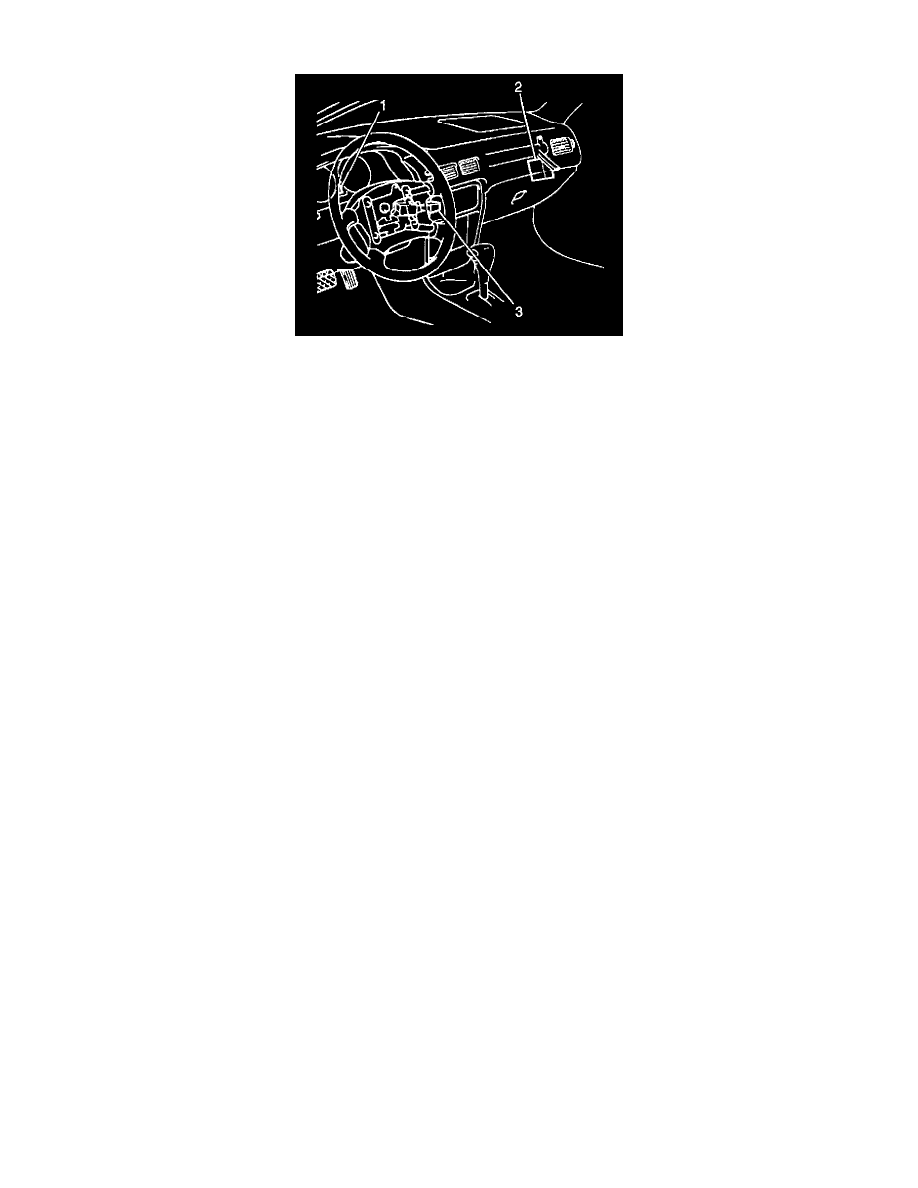Prizm L4-108 1.8L DOHC VIN 8 MFI (1998)

Cruise Control Module: Description and Operation
The cruise control module (2) is located to the right of the I/P Compartment. The main function of the cruise control module is to monitor and act upon
input signals from the cruise control switch and the Vehicle Speed Sensor (VSS).
There are tour different categories of input signals received by the cruise control module. These four categories are ON/OFF, speed control, throttle
position and cancel. The ON/OFF input signal to the cruise control module is provided by the cruise control switch and simply activates and de-activates
the cruise control system. The speed control input signals to the cruise module are provided by the cruise control switch and the VSS. Speed control
input signals are provided by the cruise control switch are the Resume/Accelerate (RES/ACC) signal and the SET/COAST signal. These signals are also
used to initiate the tap-up and tap-down functions. The cruise control module uses these signals, in addition to the vehicle speed signal from the VSS, to
determine and maintain or alter vehicle speed in accordance with the driver's commands. The throttle position signals to the cruise control module are
provided by the servo and the idle switch inside the Throttle Position (TP) sensor. These signals, as their names suggest, allow the cruise control module
to constantly monitor throttle position during cruise control system operation. The cancel input signals to the cruise control module are provided by the
cruise control switch CANCEL signal, the stoplamp switch, the PNP switch, or the cruise control release switch. These input signals inform the cruise
control module that cruise control operation should be immediately suspended.
Output signals from the cruise control module are all sent to the cruise control servo and will vary depending upon the type of input signals received. If,
for example, the cruise control module senses that vehicle speed has dropped below the desired cruise speed, an output signal will be sent to the OPEN
side of the DC servo motor within the cruise control servo. This action will cause the motor to turn the worm gear, open the throttle, and increase vehicle
speed until the desired cruise speed is activated. If the cruise control module should sense that vehicle speed is above the desired cruise speed, an output
signal is sent to the CLOSE side of the DC servo motor within the cruise control servo. This action will cause the motor to turn in the opposite direction,
close the throttle, and decrease vehicle speed until the desired cruise speed is achieved. Finally, should a cancel input signal be received, the cruise
control module de-energizes the magnetic clutch within the servo. This action disengages the DC servo motor from the worm gear, causing the throttle to
go to the idle position and effectively cancelling cruise control operation.
The cruise control module also has a self-diagnostic capability. In conjunction with the cruise control switch, it can be used to run an abbreviated
self-test which covers all cruise control switch positions, the stoplamp switch, the PNP switch, the cruise control release switch, and the VSS. In addition
to the abbreviated self-test, grounding the Tc terminal in the Data Link Connector (DLC) allows the cruise control module to flash Diagnostic Trouble
Codes (DTCs) on the CRUISE indicator. By reading the DTCs and following the diagnostic tables, any electrical problem in the cruise control system
can be identified and repaired.
